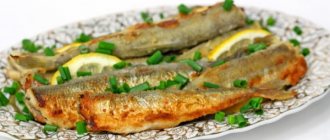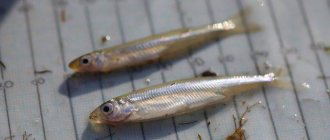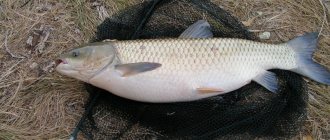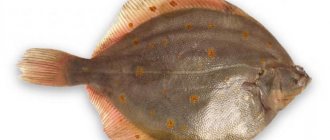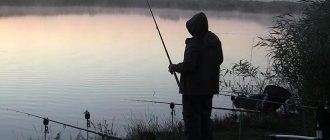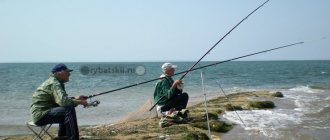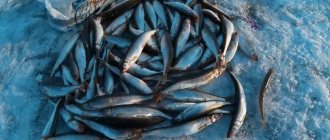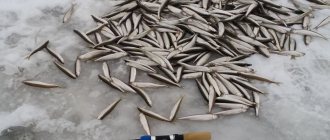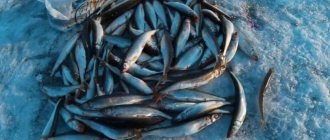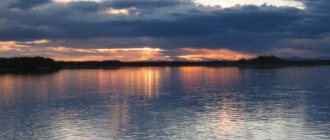Legendary smelt
Smelt is a legendary fish. This tiny predator is a real symbol of St. Petersburg. The aroma of fresh smelt, similar to the smell of young cucumbers, is a sign of the arrival of spring in the courtyards and streets of the city on the Neva.
There is even a spring festival - the Smelt Festival in St. Petersburg . What kind of fish is this, and how to catch it, we will now tell you.
A little biology
Baltic smelt (Osmerus eperlanus) is a small fish belonging to the salmon order. Although in appearance, taste and smell it is not similar to its larger counterparts. It is found in the basins of the Barents, Okhotsk and Baltic seas. The smelt subspecies lives in Lakes Ladoga and Onega. Another subspecies is found in the Far East.
Some fish can grow up to 30 cm, but the average length of a fish is 15 cm. Lake smelt is even smaller, up to 10 cm. Large Far Eastern smelt, it grows on average up to 35 cm and weighs 350 g. Its body is round, covered with translucent scales. The back is brownish, the sides are silvery and have a bluish tint. Has a large mouth with teeth. Feeds on small animals or fry.
The fish live in fairly large schools, mostly at depth; they do not go to the shores or into shallow waters. Prefers places with a flat bottom.
To spawn, smelt, like other salmon, goes to the mouths of the Luga, Neva, Narva, Volkhov and other rivers flowing into the Gulf of Finland. It begins to spawn at temperatures up to 10 C. The eggs are small, up to 1 mm. The fry hatch in approximately 2 weeks, and by August they have already grown to 5-7 cm.
They catch smelt in winter, but the real hunt for it takes place in the spring. Fishing can be both night and day. The activity of fish does not change depending on the time of day.
Catching smelt in winter
In winter, the small predator stays in the middle layers of water, on the current, the flock moves slowly. When the ice gets thick enough, fishermen can get close to schools of smelt. It is quite a long walk across the lake to the gathering place. Smelt can also stay in the winter where large tributaries flow into lakes, especially at the end of winter.
It is caught on winter fishing rods with artificial or natural baits. Artificial ones are reelless jigs, small balancers, spinners. Natural - pieces of fish (ruff, roach, crucian carp, perch, etc.) Bait is usually not used. A 20-25 g weight and several leashes with two to three jigs are attached to the bottom of the rig. Fishing line is used from 0.25 mm. It is not worth placing very small hooks, because... The fish's mouth is relatively large. It is best to use a cone-shaped sinker. It is better to use a hard nod. Fishing rod – foam plastic, bamboo. You need to hook sharply, as the bite is quick.
The most popular places in the St. Petersburg area are:
- in Ermilovskaya Bay,
- near Primorsk,
- near Ozerki,
- near the village of Rybatsky,
- in the area of the northern dam,
- near Vysotsk,
- in the Zelenogorsk region,
- at Komarovo, Repino, Privetninsky,
- at Malachite, Peski and 22 km.
In the southern part of the Gulf of Finland the following places are known:
- at Vistino's,
- Sistapalkino,
- in the area of Krasnoflotsk and Krasnaya Gorka,
- and the levee area on the south side.
While fishing, you can experiment and change several types of jigs, try changing jigs at different depths. Fishing is very active; with a good bite, two fishing rods are enough. If the bite is bad, set up a row of up to 15 fishing rods one and a half meters apart from each other and run from one to another when biting.
If you still manage to catch a good school, the catch will be several kilograms. Even if there are many fishermen in the place where the flock gathers, no one will be left without a catch, the flocks are very numerous. The best months for ice fishing are February and March .
Catching smelt in winter on the Gulf of Finland
Smelt is truly a cult fish for St. Petersburg, and as soon as the Gulf of Finland freezes with ice, thousands of pilgrims flock to it, and I am no exception. Because catching smelt in winter is a very exciting activity!
Already in the first days of January, I feasted on this cucumber-scented delicacy. And I will never forget the moment when, having pulled out the first caught fish from the hole, the smell of the freshest cucumbers hung in the air.
And now, in order, where, how and what to catch smelt with.
Spring smelt fishing
In the spring, smelt go to spawning grounds and come closer to the shore. It doesn't go high upstream. She practically stops pecking and is caught with nets with long handles and spiders. Experienced fishermen make nets by hand. They also make drag nets. But such methods of fishing, as well as fishing with nets, are prohibited during the spawning period.
On the Neva River, fishermen know their favorite spawning places:
Smelt are usually caught with a fishing rod from the piers, from the shore. It is best to fish in the morning before 11 o'clock or late in the evening, at night. You need a fishing rod that is light and durable, up to 6 meters long. It is possible with a reel, or with blind equipment. The best baits will be small pieces of fish, a worm, bloodworms, an artificial fly, and maggots. No bait is used. The bite is sharp, the fish quickly grabs the bait, and gatherings are rare.
The peculiarity of smelt is the smell of cucumber, which disappears after cooking (frying, smoking). The taste of the meat is still unusual and tender. It is very tasty and popular among St. Petersburg residents and guests of the northern capital.
Smelt: description of the fish and general rules for successful fishing
What are the first associations that come to your mind when you mention the Northern capital - St. Petersburg? White nights, drawbridges, famous palaces and monuments, the Hermitage and... smelt. This little fish with its unique aroma of fresh cucumbers is the hallmark of spring St. Petersburg.
All townspeople not only love smelt; in honor of it, an annual festival, the Smelt Festival, was even established, which is held by the St. Petersburg branch of the Union of Cultural Workers. But, unfortunately, the fishing period for this fish is very short.
The first period is winter, the second is spring when it goes to spawn. Therefore, everyone is in a hurry, some to go fishing, some to the market, in order to have time to enjoy their favorite and already traditional delicacy. It should be noted that when frozen, smelt loses its amazing smell and taste. Only when it is fresh is it the most delicious.
What is this famous smelt fishing? The smelt, which is caught off the banks of the Neva, is a fairly small fish; you need to get 25-35 pieces per kilogram, although there are specimens weighing 200-250 grams. She is a member of the salmon family. A distinctive feature is the large, protruding lower jaw. This small predator is very beautiful, with proportional shapes and iridescent scales from brownish-green on the back to silver-blue towards the belly.
The smelt has arrived: where is it caught and how is this “Baltic cucumber” prepared?
Official seasonal points selling smelt will open in St. Petersburg from tomorrow. Well, they mostly catch it in the Leningrad region. Prices are still “biting”, but along with warming we are expecting the traditional decline. And we also traditionally talk about the features of poutine, places of sale, and also about how best to prepare fish that smells fragrantly of fresh cucumbers.
Where will they sell it?
So, from April 15, smelt will be sold in retail outlets in a dozen districts of the metropolis until May 31. The sale of fish is organized in areas provided to entrepreneurs under contracts for temporary trading.
Fishery protection and measures...
At the start of the fishing season, the following difficulty arose: the North-Western Directorate of Rosrybolovstvo - Fishery Protection demanded that the rules be followed, according to which when fishing for smelt, there must be at least a hundred meters between the lines. Therefore, fishermen, who have been arranging nets in their own way for years and do not consider them serious fishing gear, warned that this could seriously reduce the catch and, accordingly, increase the price of fish.
But as the regional specialized committee explained to Online47, the process of coordinating the installation locations of the hems is underway. So we can hope for a positive scenario for Putin, and at the same time that prices will come down from sky-high heights (from 700 to 1000 rubles).
By the way, at the height of the fishing season in the Leningrad region, at the height of a successful season, it is traditionally sold according to the following ranking: small - from 50, medium - from 250, and large - 300 rubles. St. Petersburg can only dream of such prices.
Yes, and it is already known that this year the Gastronomic Festival “Smelt is Coming!” will be held again in Novaya Ladoga. It will be three days – May 14, 15 and 16.
Do not miss
The price of smelt in St. Petersburg turned out to be around a thousand rubles per kilogram
Seasonal outlets selling smelt will open in St. Petersburg from April 15
Capital recipes
As they say in the smelt capital, Novaya Ladoga, the main thing is to choose the right smelt. And the characteristic smell of fresh cucumbers will help you do this unmistakably.
“The best choice for those who love crackers is a fish 10-12 centimeters in size. And for those who prefer larger ones, and with caviar, this advice: add a little milk for juiciness when frying, and it is better to fry in batter - egg, salt, flour - local owner Polina Semina gives useful knowledge to lovers of pickled smelt . – For a liter of water there should be a tablespoon of salt and sugar, from three to five bay leaves, a few black peppercorns, and chopped onion. Fans of spicy dishes add vinegar.”
Then, as she explains, it all needs to be brought to a boil, turned off and cooled. Place thin slices of lemon on the bottom of the jars, and then two layers of already fried and cooled aromatic fish. Next - another layer of thin lemon slices, again - two layers of smelt, and so on. Pour the cooled liquid over the fish, cover with a lid and place in a cool place for at least a day. Well, then you can eat with pleasure.
We cook, we eat and we understand how right Gogol when he wrote: “They say there are two small fish: vendace and smelt, such that your mouth will begin to flow as soon as you start eating...”
Evgenia Dyleva
Photo: Online47
Natural habitat of smelt
Smelt is a long-lived fish, its average lifespan is about 30 years. This is a fish of the cold and deep waters of the Arctic Ocean, White and Baltic Seas, it is found in the Gulf of Finland and Lake Ladoga. The individual is very unpretentious and tenacious; it can survive for a long time without water due to special sacs over the gills that contain its supply. Smelt usually travel in large schools.
For spawning, like all salmon, it rises to the mouths of the Neva and Narva, Luga, Volkhov rivers and most rivers flowing into the Gulf of Finland immediately after their opening. They begin laying eggs at a water temperature of 5-10 degrees Celsius. The eggs are very small - about 1 mm in diameter. The fry appears after about two weeks and begins to gain height and weight very quickly. By the end of summer, it manages to grow to 5 - 7 cm.
What not to do when catching smelt in the North-West
On the eve of the smelt fishing season, the North-Western Territorial Administration of the Federal Fisheries Agency reminds about prohibited fishing gear.
According to the Fishing Rules for the Western Fishery Basin, approved by order of the Federal Fishery Agency dated December 10, 2008 No. 393, when conducting recreational fishing of aquatic biological resources on Lake Ladoga with the basins of rivers flowing into it, the use of:
networks of all types;
traps of all types (merezh, venterey, versh, “muzzle”, etc.);
hand fishing rods and spinning gear of all systems and names with a total number of hooks (hooks) of more than 10 pieces per citizen;
drags, seines, drags, trawling fishing gear;
“capes”, “TVs”, “screens”, “kerchiefs”;
lifters (“spiders”), scoops or other straining devices measuring more than 100 x 100 centimeters and with a mesh size (pitch) of more than 10 mm;
nets, nets, prisons, traps;
electric current;
firearms and pneumatic weapons (except for shotguns and pistols for underwater hunting).
It is prohibited to carry out production (catch):
method of purging (by hooking);
for illumination from watercraft;
by installing driveways, fences, dams, partially or completely blocking the bed of water bodies of fishery importance and preventing the free movement of fish;
a citizen has more than three crayfish traps (the diameter of each crayfish trap is more than 80 cm and the mesh size (pitch) is less than 20 mm);
by saddles;
circles and garters with a total number of hooks of more than 10 pieces per citizen;
on the track (trolling) using a sail and a motor using more than two baits.
It is also prohibited to extract (catch) aquatic biological resources, including spearfishing and collecting aquatic biological resources, using scuba gear and other self-contained breathing devices.
When conducting recreational fishing of aquatic biological resources on other water bodies of fishery importance in the Leningrad Region and St. Petersburg, the use of:
networks of all types;
traps of all types (merezh, venterey, versh, “muzzle”, etc.);
“zakidushki”, “postavushki”, “pokes” and other passive fishing gear in rivers that are the habitat of Atlantic salmon (salmon) and brown trout (freshwater residential form);
hand fishing rods and spinning gear of all systems and names with a total number of hooks (hooks) of more than 10 pieces per citizen;
drags, seines, drags, trawling fishing gear;
“capes”, “TVs”, “screens”, “kerchiefs”;
lifters (“spiders”), scoops or other straining devices measuring more than 100 x 100 centimeters and with a mesh size (pitch) of more than 10 mm;
nets and nets (except for the use of these tools with a diameter of up to 1 meter for catching smelt during the spawning period without the use of watercraft) at a distance of less than 500 meters from seine nets and fixed fishing gear in the drainage canal of the city of Sestroretsk, in the rivers Volkhov, Syas, Pasha, Svir, in the Neva River from Arsenalnaya Street to the mouth of the Okhta River (right bank);
prisons, traps;
electric current;
firearms and pneumatic weapons (except for shotguns and pistols for underwater hunting);
It is prohibited to carry out production (catch):
method of purging (by hooking);
for illumination from watercraft;
by installing driveways, fences, dams, partially or completely blocking the bed of water bodies of fishery importance and preventing the free movement of fish;
a citizen has more than three crayfish traps (the diameter of each crayfish trap is more than 80 centimeters and the mesh size (pitch) is less than 20 mm);
by saddles;
circles and garters with a total number of hooks of more than 10 pieces per citizen;
on the track (trolling) using a sail and a motor using more than two baits.
It is prohibited to extract (catch) aquatic biological resources, including spearfishing and collecting aquatic biological resources, using scuba gear and other self-contained breathing devices.
based on materials provided by the North-Western TU of the Federal Fisheries Agency
What to use to catch smelt. Winter fishing rods with phosphorus jigs
For winter smelt fishing, winter fishing rods with bright nods on a spring and a large amount of fishing line are used. The equipment is very simple - a weight weighing 20-25 grams is tied to the bottom, and above it there are several leashes with thinner fishing line and phosphorus jigs. As a rule, two pieces are used, sometimes three.
During winter fishing, when catching smelt, you can notice what color jig it bites best. From my own experience, I come to the conclusion that larger smelt love green and red jigs. Experienced fishermen experiment when the bite is bad and try tying hooks at different depths. Sometimes this brings success in catching smelt when it bites 4 - 5 - 6 and even 8 meters from the bottom.
Winter smelt fishing is very sporting. During a good bite, one or two fishing rods are enough, but on bad days, fishermen place up to 12 - 15 fishing rods at a distance of one and a half meters from each other, and with each bite, the angler runs headlong to the one that bites, sharply hooks and begins to drag the fish out of the water from great depth, waving his arms in different directions. Most often, smelt fishing rods are placed in one row, in two rows with an interval of 5 - 6 meters, or in a semicircle.
The important thing is that the line taken out from the hole, which is blown away by the wind, does not entangle other fishing rods. Most anglers use the main line 0.25 - 0.30 mm, leashes are made from line 0.17 - 0.20 mm. Usually after such fishing, especially when the smelt are biting, you spend the whole day running so hard, jumping and “swinging” getting the treasured fish out of the hole that training in the gym will seem like paradise to many. This does not take into account the fact that before this you need to walk on ice and snow for about 5 kilometers and drill a bunch of holes.
Gear for catching smelt in winter
There are many variations of winter fishing rods for smelt. Some people fish with a fishing rod, while others prefer a rod and reel. I fish with a rod and reel because of ease of transportation and depth adjustment.
There is an opinion that fishing rods with a reel are not reliable and break when hitting ice, I have never had such cases and the reel did not stick in the cold. But I do not exclude such a development of events.
For this reason, I will describe the gear based on my personal experience.
I started the season without any frills, with a standard bottom fishing rod for smelt, and now I will briefly talk about the equipment:
- Fishing rod and reel. I wind 30 meters of fishing line on a reel.
- Line Mikado Flue 0.25 mm. This acid-colored line is very visible in the snow.
- Bell weight 25 gr.
- Phosphorus jigs of various colors and sizes. I knitted jigs on leashes 2.5-3 cm.
- Lead line 0.16 mm. By the way, when the jig broke and I tied on the main line, I did not observe a decrease in bites on this fishing rod.
- Spring-ball nod
Assembled smelt fishing rod
I did 2 fishing trips with these fishing rods, and then the experiments began...
The experiments began after small smelt arrived and fishing turned into some kind of crossfit. Hundreds of bites and only a few were realized. After fishing, everything hurt. It’s a pity there’s no video of me running from hole to hole and pulling out the tackle from 8 meters deep without any fish. But some people fish even at 30 meters - poor fellows.
And I decided to slightly modernize the jig for smelt, namely to make it on a double. Of course, I didn’t have a phosphor and it was decided to remove it from a ready-made jig. I just bit off the hook and took it out.
Half the job is done, all that remains is to find small doubles, and then I had to run around the city, it turns out this is not a very popular product. And hurray! I finally made a jig and went to test the tackle.
Mormyshka on a double
Imagine my disappointment when I discovered that the fish were caught no better than with ordinary smelt jigs, and sometimes even worse, since the double was constantly caught on the main line.
I had to give up these jigs; I just ruined my workers in vain.
For the next fishing trip, I decided to implement my other idea. In the store I found a heavy 22 gram spoon, coated on one side with a phosphor, and immediately pictures ran through my head of all the Baltic smelt gathering near my hole, into which my luminous spoon was lowered.
Spinner with phosphor
I removed the tee from it and tied an ordinary phosphorus jig on a small leash. I took a ready-made fishing rod and put this spinner instead of a bell weight. And with joyful thoughts he rushed off to go fishing.
Spinner with jig
I was disappointed while fishing - the bites were hard to see. If I tore the tackle off the bottom, the nod would be heavily loaded and, as a result, nothing could be seen. And if I lowered the tackle to the bottom, then for some reason the smelt preferred the jig tied to the spoon, pecked at it, felt resistance and simply threw the bait. I also abandoned this method of fishing.
But I didn’t give up experimenting with spinners. Very often the fish pecked right under the hole and I made two fishing rods with small shiny spoons that did not load the nod. I installed these fishing rods when the bites at depth stopped. And this option, as they say, “shot”. Since then, I placed the main fishing rods with a weight on the bottom, and placed one with a spinner a meter from the ice. And depending on the bite, I changed and rearranged them.
Spring smelt fishing on the Neva
In the spring, when the fish go to spawn, they completely stop biting; nets are used to catch them. You can buy them in the store, but fishermen prefer to make them themselves - this has already become a kind of St. Petersburg fishing tradition.
Experienced fishermen advise not just throwing and pulling out the net, but pulling it lightly along the bottom, but this requires experience and it is important to “feel” the movement with your fingers. It must be remembered that in order to catch smelt on the Neva during spawning, you must buy a fishing license.
Fishing for smelt in the Gulf of Finland
The period of smelt fishing in the Gulf of Finland begins with the formation of ice and continues throughout the winter. In recent years, winters have become warmer, and safe ice only appears after the New Year holidays. By this time, the first schools of smelt are already beginning to gather in the waters of the Gulf of Finland. Particularly impatient fishermen manage to catch the first smelt using feeder rigs from the dam or in a plumb line from PVC boats. But this article will focus on catching smelt from ice.
The best baits for catching smelt
The choice of bait is important for successful smelt fishing. The best bait is considered to be eelpout meat - it is quite tough and holds well on the hook. It is necessary to bait very carefully, so that the hook tip remains open - this will ensure a reliable hooking.
The piece of bait should be small and properly cut. To do this, cut a narrow transverse strip (4-5 mm) along the ridge and divide it into two parts. Bait from ruffe, perch, crucian carp, carp and smelt itself also gives a good bite. The smelt takes the worm reluctantly.
Experienced fishermen have noticed that in different places smelt takes different bait: for example, in Komarovo it bites well on eelpout, in the area of the dam - on crucian carp and carp, and on the southern coast it prefers perch and ruff.
Kaliningrad fishermen share the secret of fishing with foam rubber painted yellow or white. This bait holds the hook well, and the bright color attracts fish.
We have shared with you the basic rules and secrets of smelt fishing that we were able to collect from the stories of avid smelt fishermen.
If you have something to tell about catching this fish, special secrets that you are ready to share with the rest of your fellow hookers, write to us.
Also viewed with this page:
Your reviews and comments about smelt fishing
Neva smelt
In spring, the streets will suddenly smell like fresh cucumbers. This smell, somewhat strange for an ignorant person, comes from smelt, which is sold in the city. The small whitish fish with a cucumber smell is very popular among city residents. Smelt is eaten fried and boiled, but it is especially good marinated in vinegar with vegetables, or hot smoked.
Smelt is a small fish: caught males weigh on average 32 grams, females - 37 grams. The body of the smelt is elongated, spindle-shaped, covered with scales. The back is brownish-green, the sides and belly are whitish-silver. The mouth is upper, the jaws are equipped with teeth.
The Neva smelt got its name because in the spring it is caught in the Neva literally within the city limits and sometimes right there, on the fishing grounds, it is sold live to the population.
In reality, smelt is a semi-anadromous fish, lives in the brackish waters of the Gulf of Finland and only for spawning enters the rivers flowing into the gulf, with the Neva being the most favorite body of water. Smelt enters other rivers (Luga, Narova, Sestra) in small quantities. Smelt does not rise high up rivers and spawns in the lower reaches, even in the pre-estuarine spaces.
It lives in flocks more or less evenly throughout the Gulf of Finland, but in some places it gathers quite densely, for example, in the Neva Bay, Koporskaya and Luga. In the autumn months it stays in the indicated places away from the coast, mainly on sandy soils. In winter, it moves to deeper areas, stays near the bottom and hardly moves.
Long before the bay opens, schools of smelt leave their wintering grounds and begin to move closer to the shores and river mouths. The nature of these pre-spring migrations is significantly influenced by water temperature, wind strength and direction. Even under the ice in front of the mouth of the Neva, large accumulations of smelt form, but fish usually enter the river no earlier than the first days of May.
At this time, she stops feeding, and the males acquire a well-defined nuptial plumage: their body is covered with small white tubercles, giving the body a rough appearance. By this feature, males can be easily distinguished from females by touch.
Spawning occurs when the water temperature rises to 3-4°C. The fertility of common smelt (it is caught mainly at the age of 3-5 years) ranges from 10 to 40 thousand eggs. The caviar is small (2800 pieces in 1 gram), transparent, sticky. It is deposited on the bottom with sandy or pebbly soil, as well as on vegetation.
